This post is part of a series on the collection of ornithologist William Brewster (1851-1919) at the Ernst Mayr Library, written by Elizabeth Meyer, library project assistant.
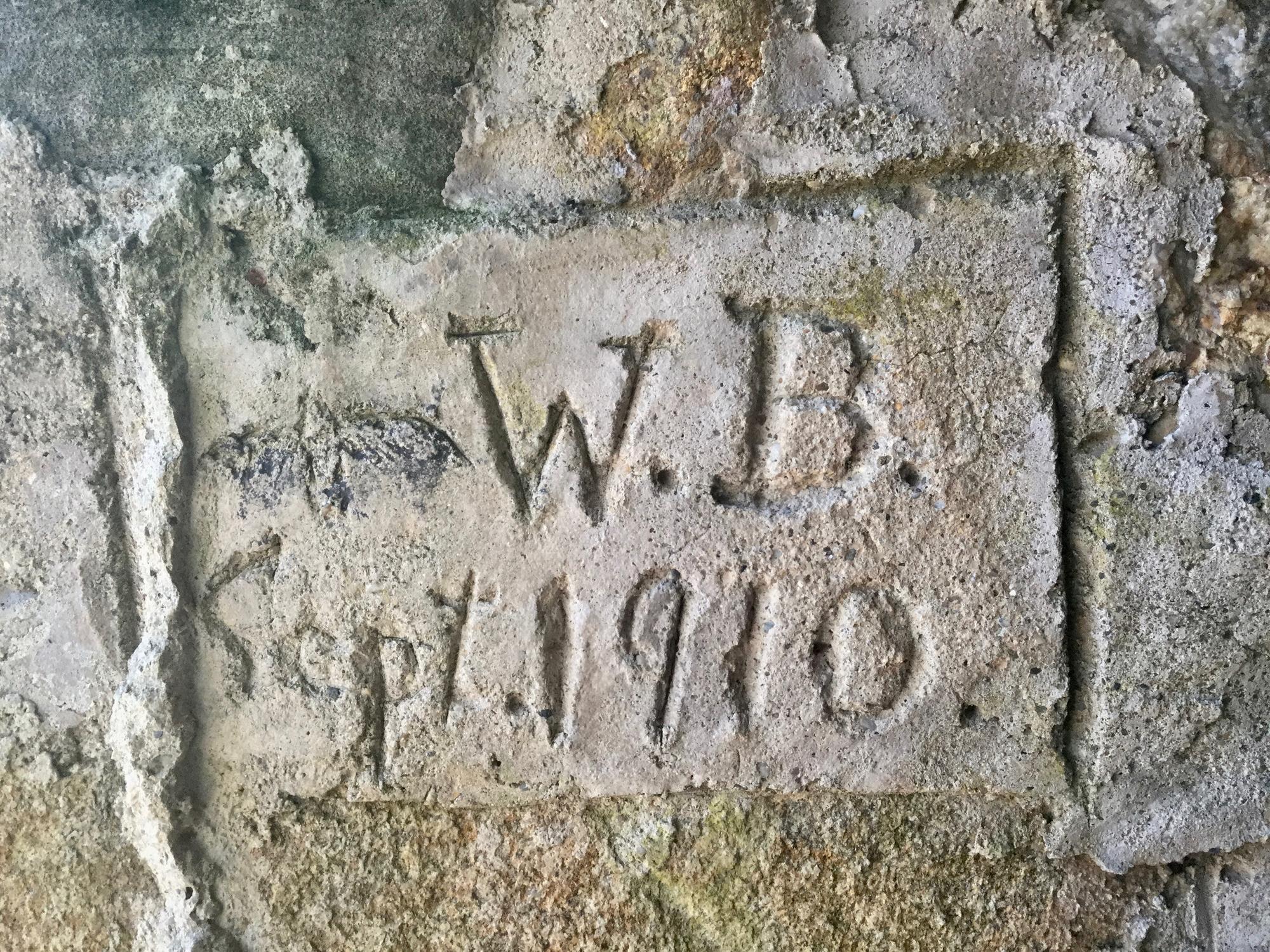
This past weekend I went with a friend to visit October Farm, William Brewster’s old stomping ground along the Concord River in Concord, Mass. Brewster was a renowned American amateur ornithologist, first president of the Massachusetts Audubon Society, and a president of the American Ornithologists' Union. Brewster would go to Concord to study nature and escape city life in Cambridge (where he worked as a curator at the MCZ). He purchased Ball’s Hill in 1891 and added to the property over the years, eventually buying up 300 acres between the Concord River and Monument Street, intending to save the area from development. He stayed at a farm house on Monument Street but also built a cabin at Ball’s Hill where he immersed himself in the landscape and kept detailed records on animal life. Eventually another cabin was added for Brewster’s assistant, Gilbert.
The property is now protected land with trails newly open to the public. In 2016, buying the land to protect it from development was a top-priority project of the Concord Land Conservation Trust and the Town of Concord. Its success was ensured with the help of funding through the Community Preservation Act and a Mass. Energy and Environmental Affairs LAND grant.
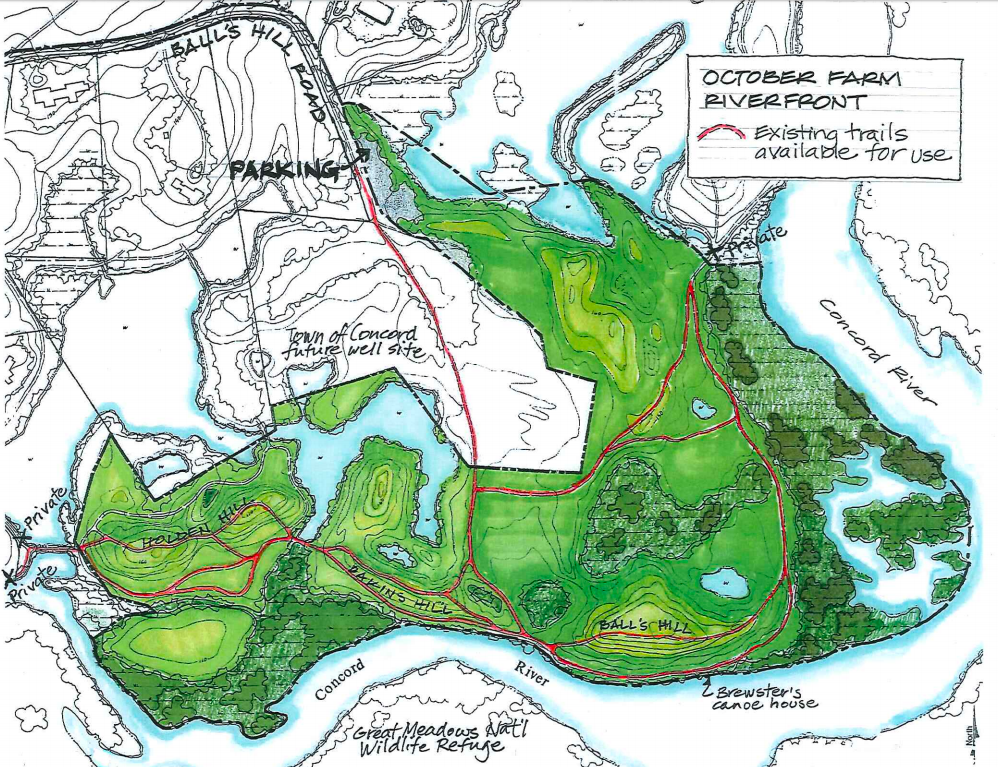
Current trail map provided by Concord Land Conservation Trust. On the map are marked Ball’s Hill, Dakin’s Hill, and Holden Hill (all locations regularly mentioned in Brewster’s journals) as well as his canoe house on the water below Ball’s Hill. Across the River is Great Meadows National Wildlife Refuge. Behind the ridge of hills are wetlands. (Image credit: Concord Land Conservation Trust.)
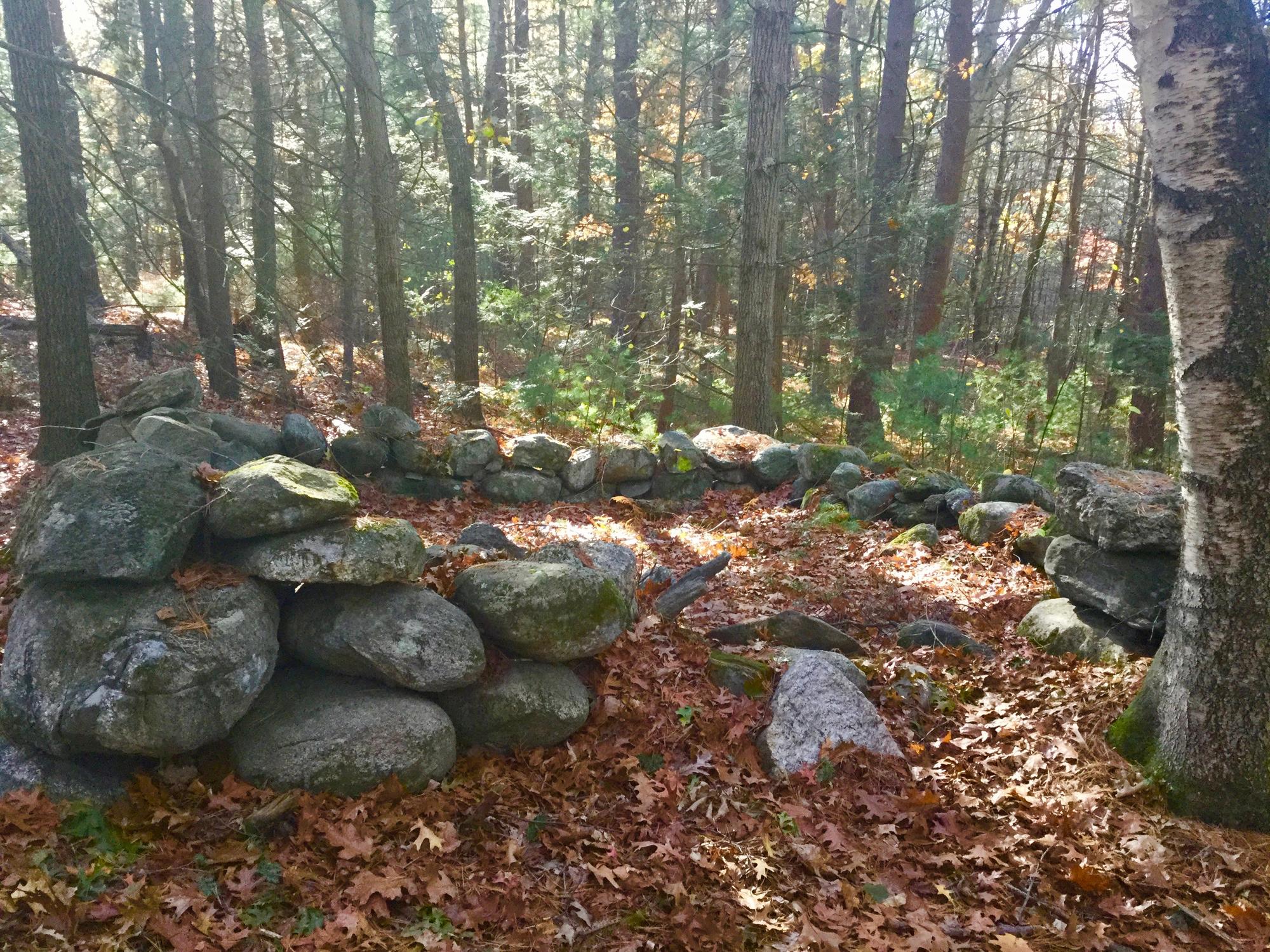
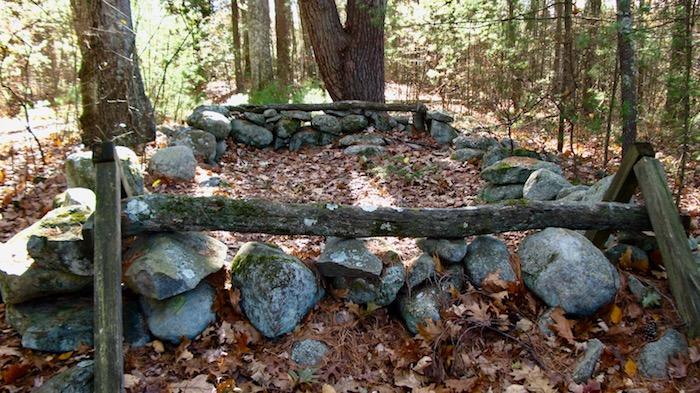
Two stone foundations on Brewster’s October Farm property.
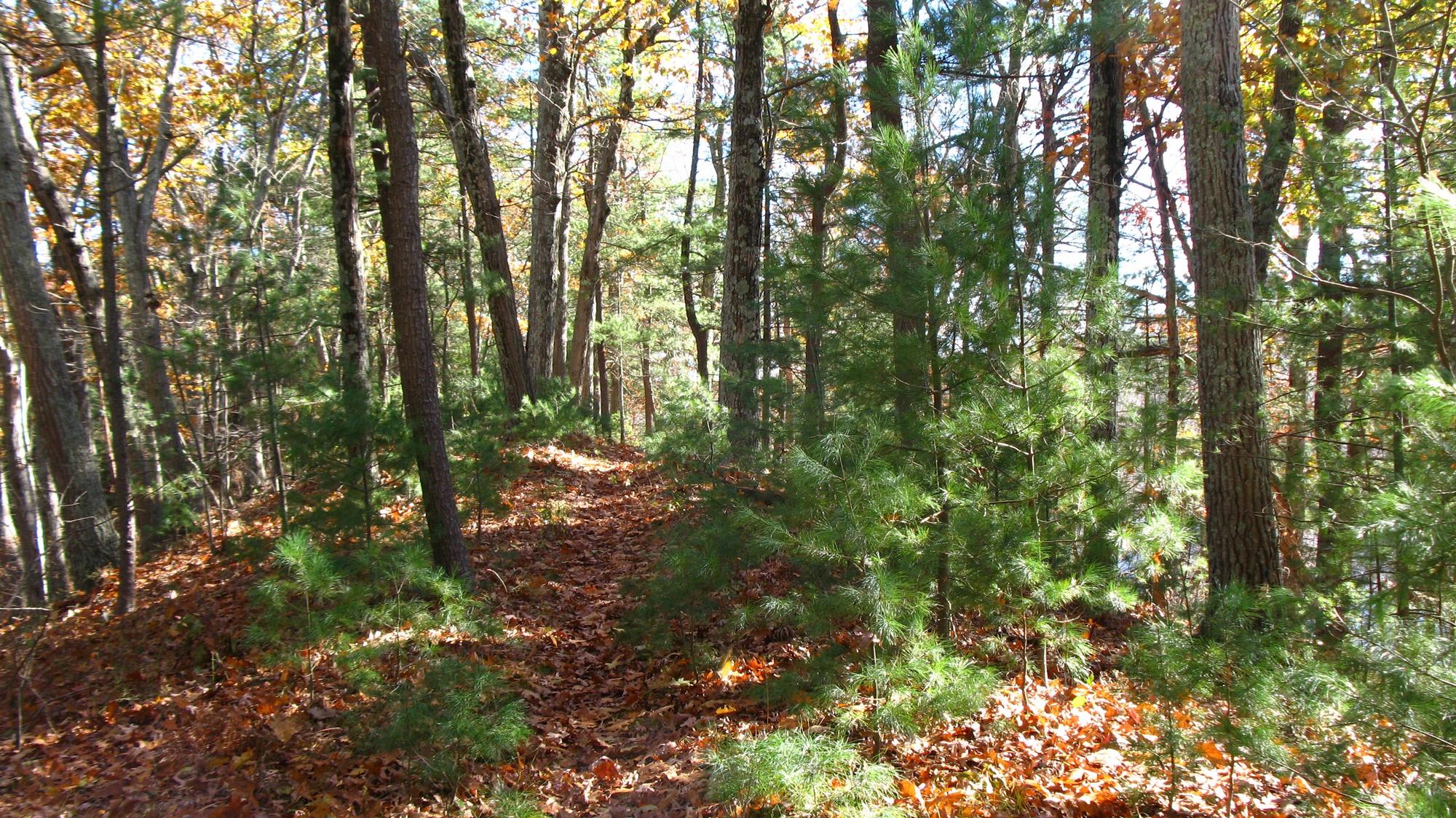
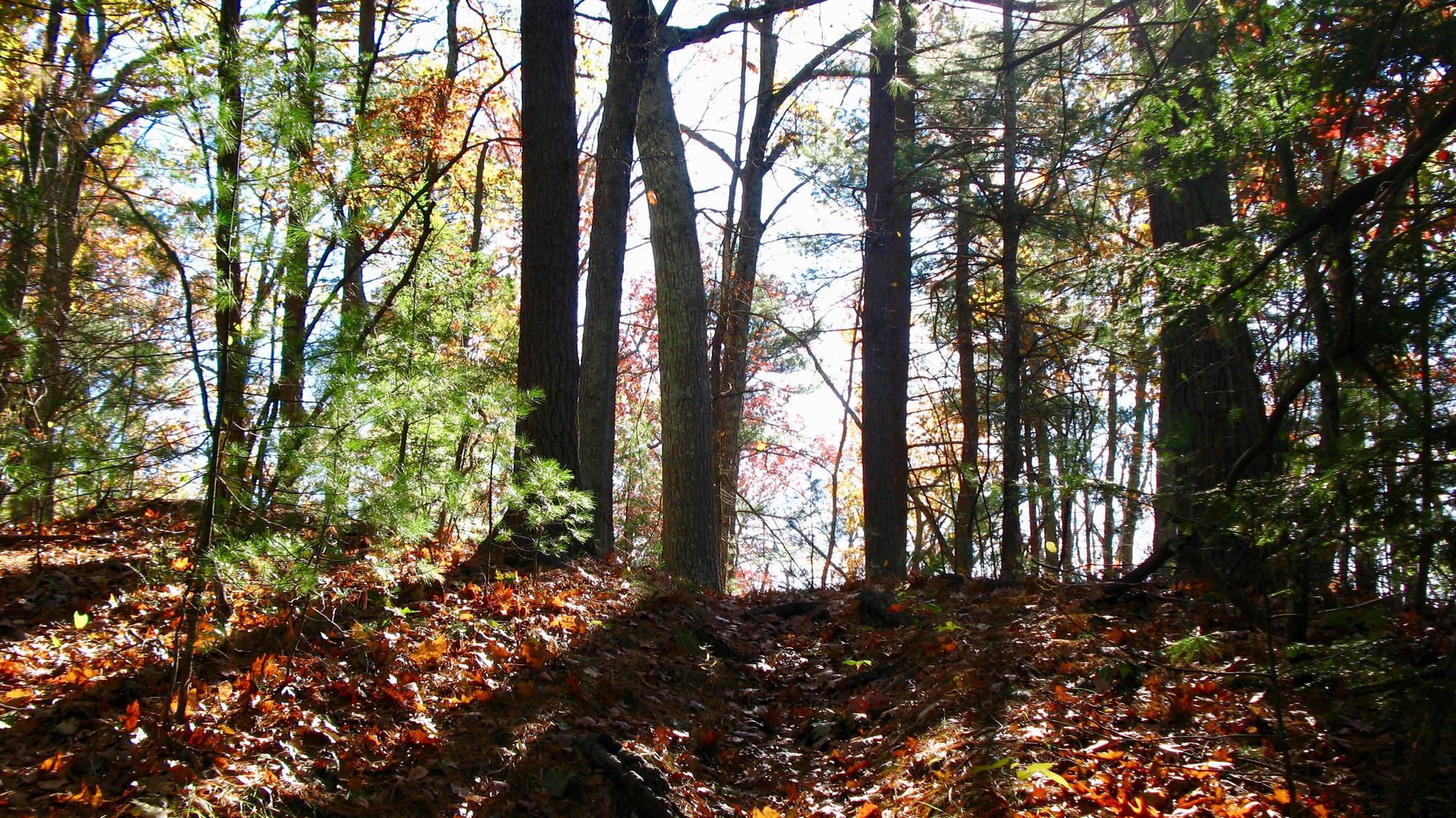
Trail along ridge of Dakins Hill.
After reading so much about the area in Brewster’s journals, I was looking forward to finally seeing the landmarks I’d read about. Even knowing how much Brewster loved this spot, I was still amazed by how beautiful and interesting the landscape was. The hills were small but steep, forming an up-and-down ridge along the river. Between the hills and the road were a series of small ponds and wetland areas, where Brewster described hearing bitterns and frogs at night. The dramatic but small-scale nature of the hills suggested to me that the topography might be the result of glacial activity. My guess turned out to be right: these hills were built up from sediments deposited by streams of glacial meltwater during the retreat of the most recent ice age about 15,000 years ago. It’s a fun area to explore, a playful landscape with a great variety of habitats. 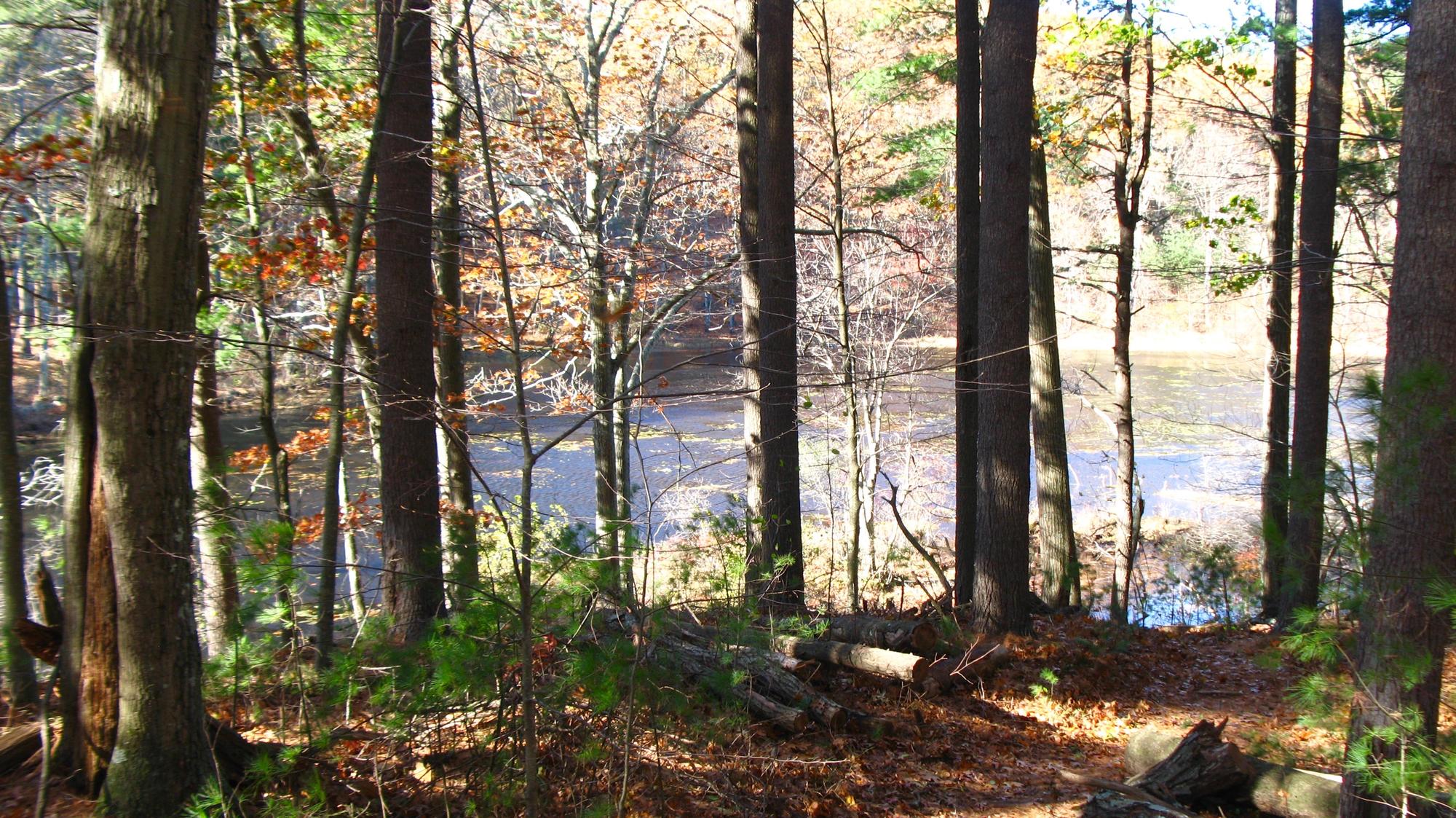
View of the river from base of Holden Hill.
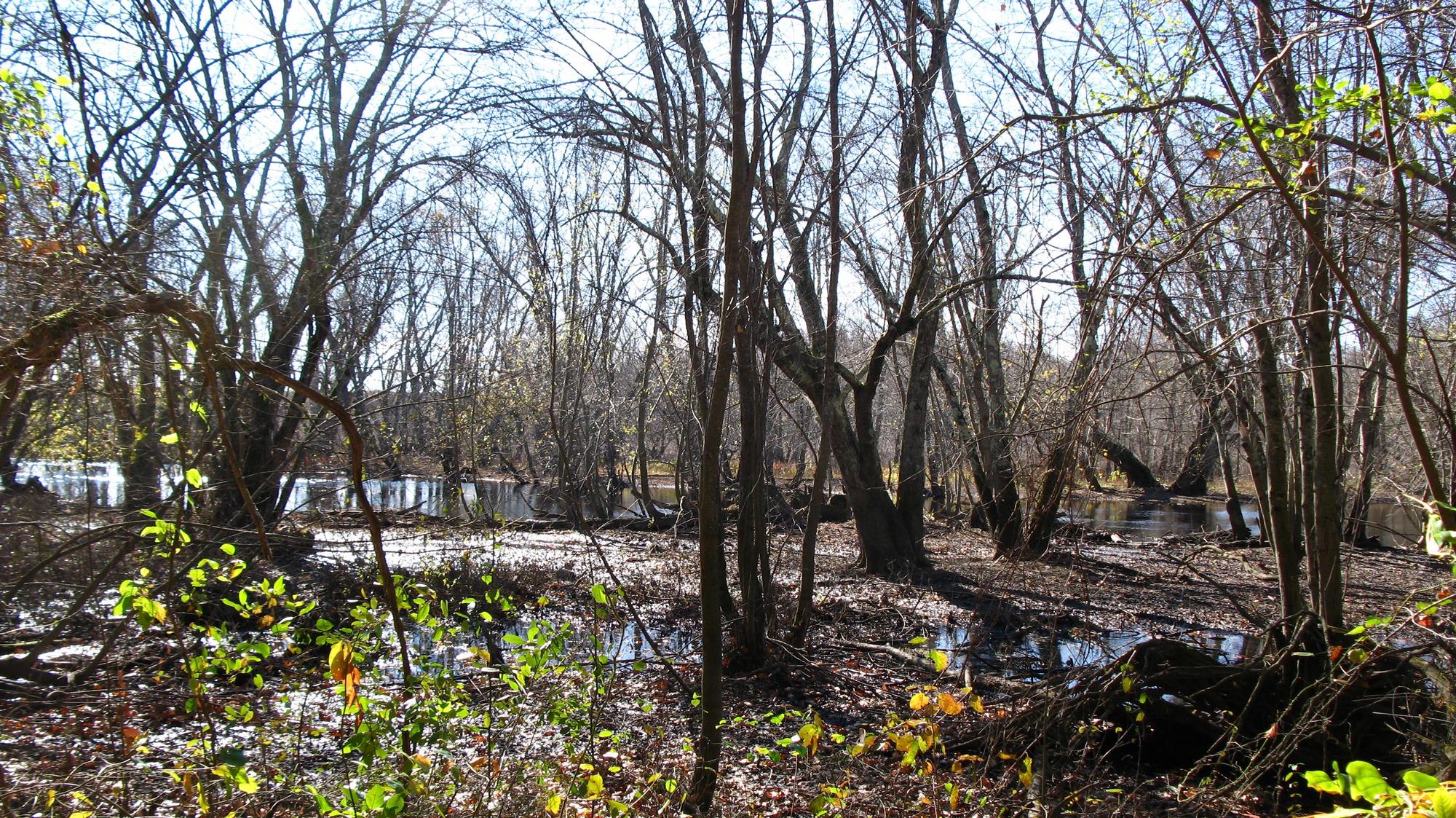
Floodplain below Holden Hill and Dakins Hill.
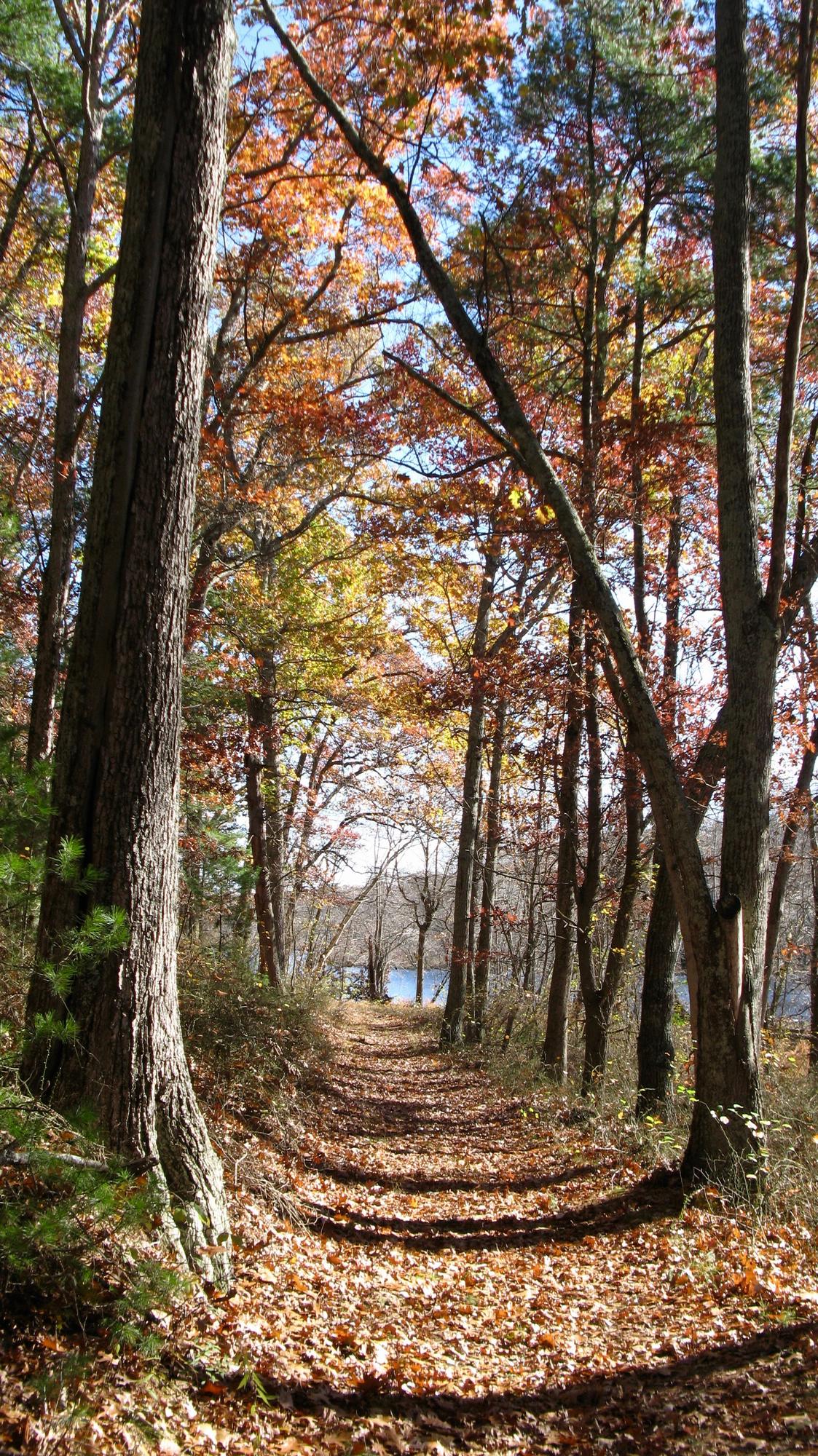
Riverside trail below Ball’s Hill.
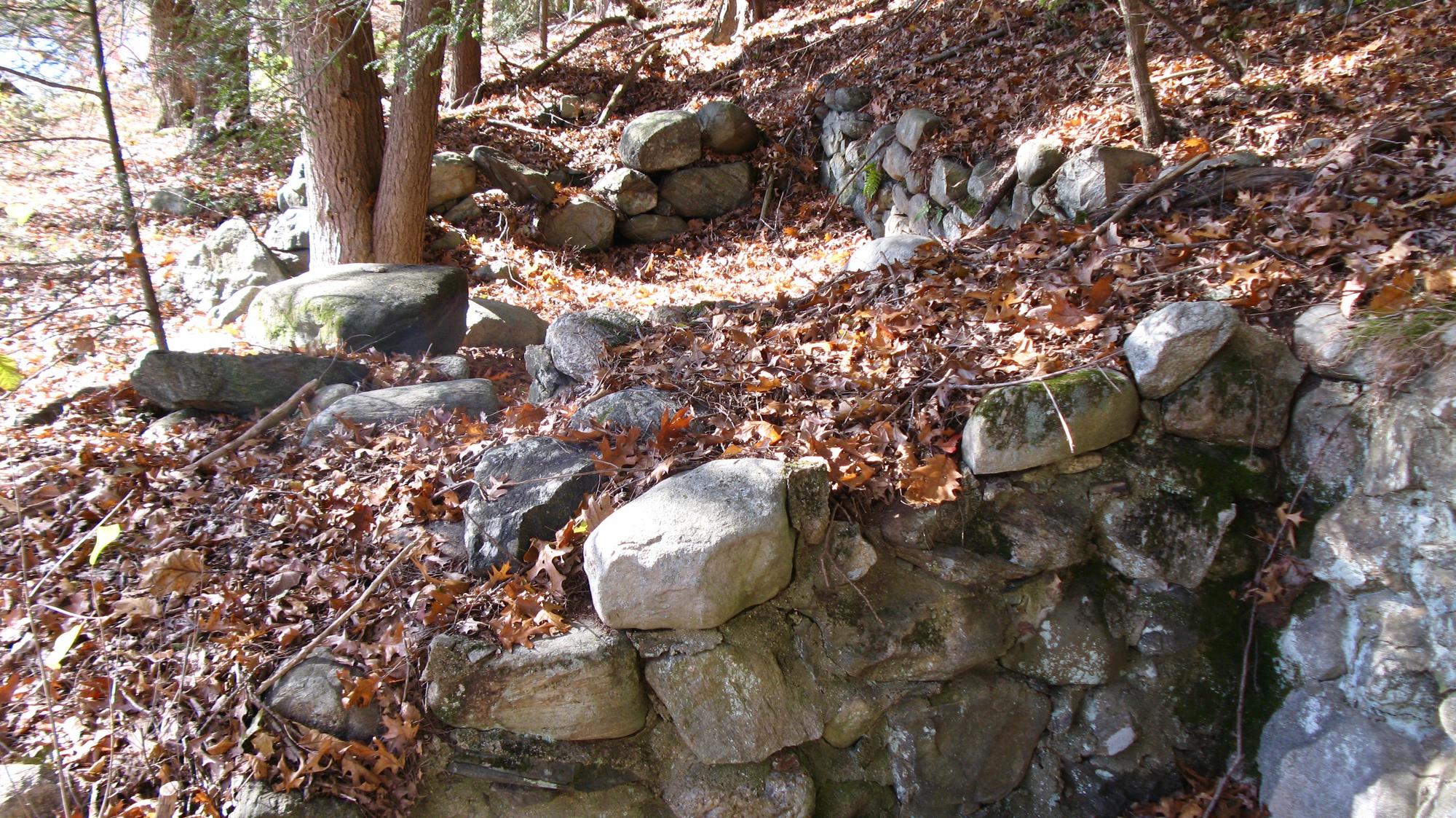
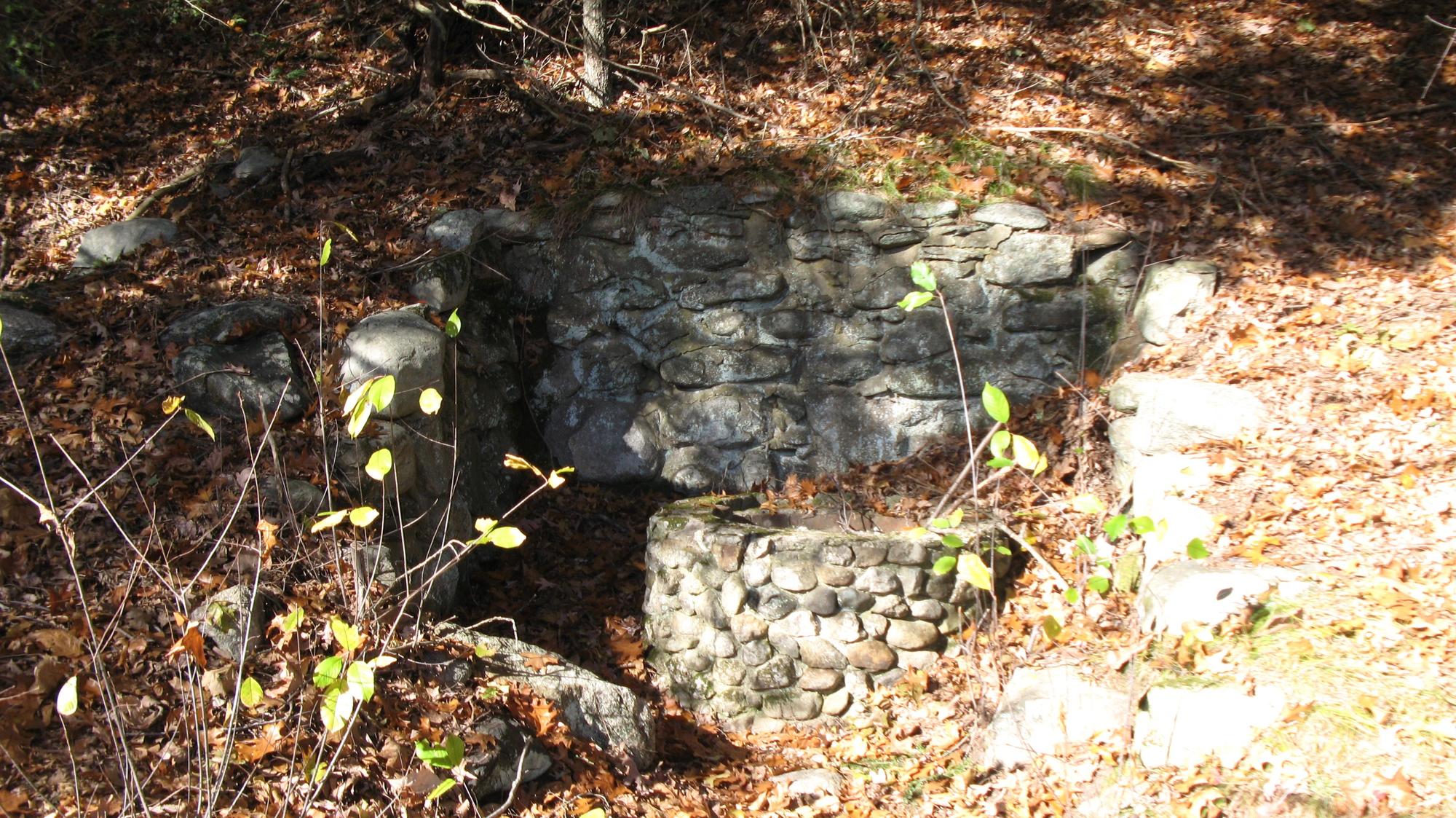
Stone foundations along riverside trail below Ball’s Hill.
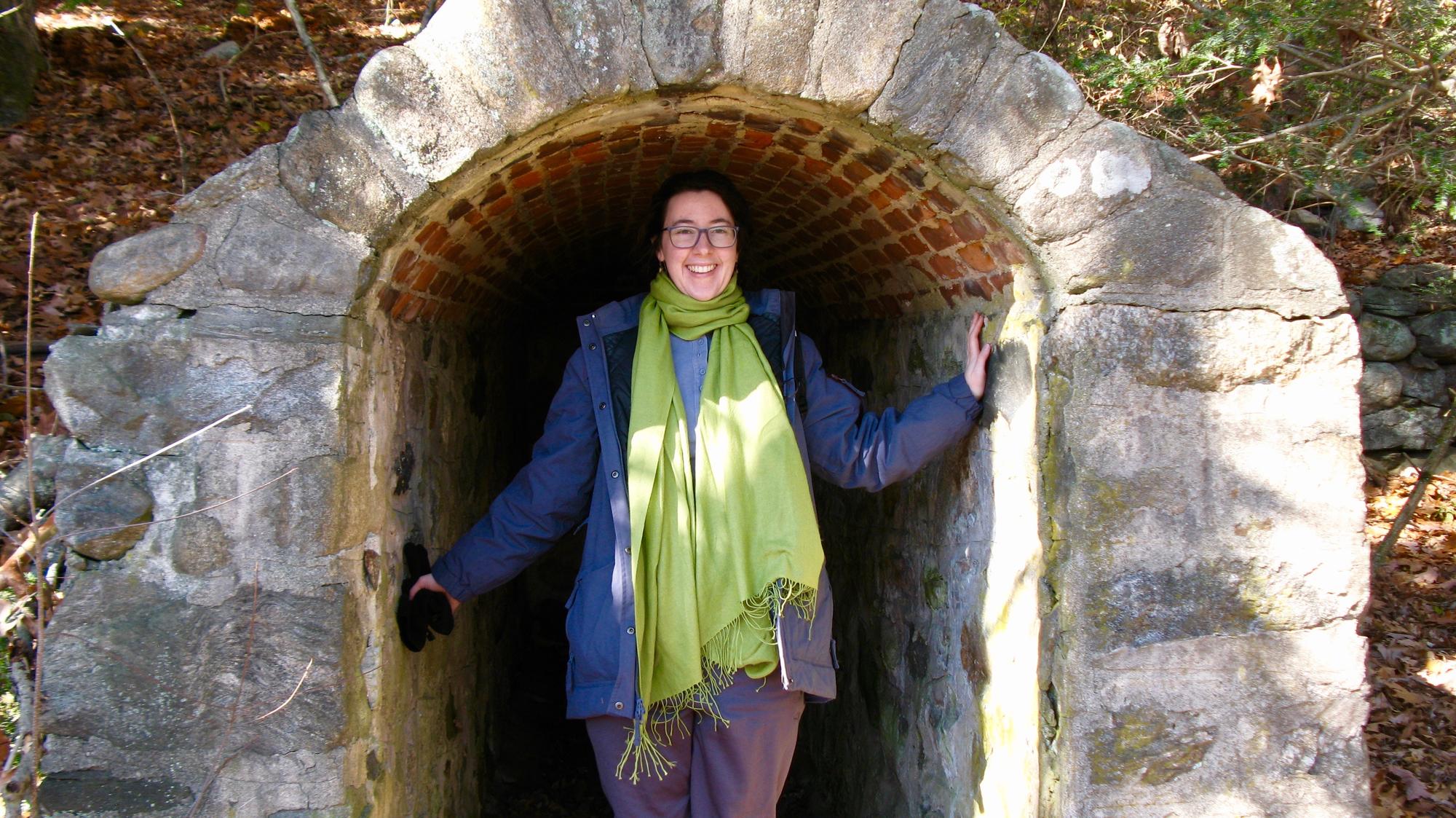
Brewster’s canoe shed (with me for scale).
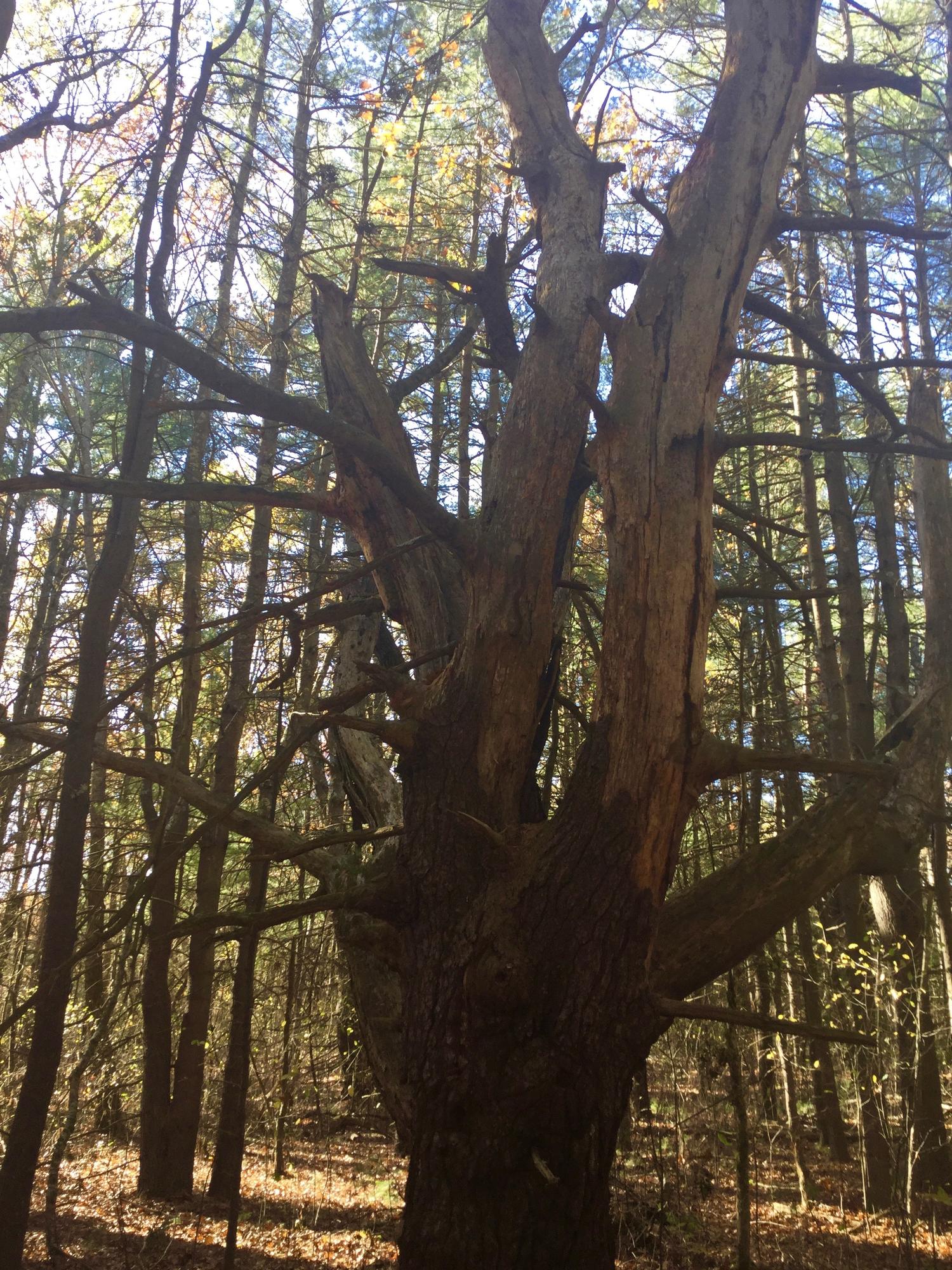
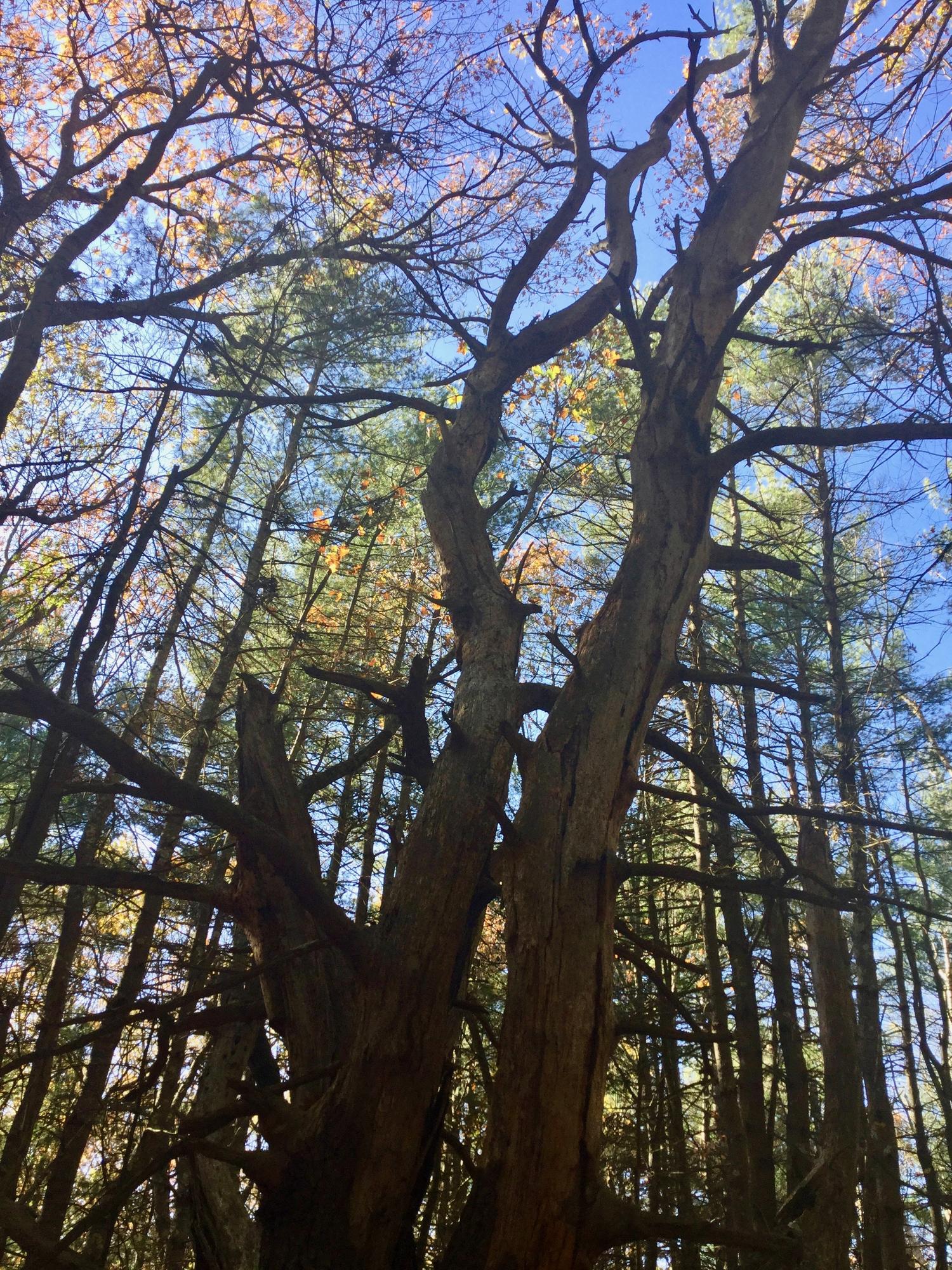
Large old trees.
We were there at noon on a very bright, cold, windy November day - not the best time for seeing birds or taking photos. We found few birds: some Chickadees, White-breasted Nuthatches, and Canada Geese. But few minutes before we got back to the parking area at the end of our walk, I was very excited to see this: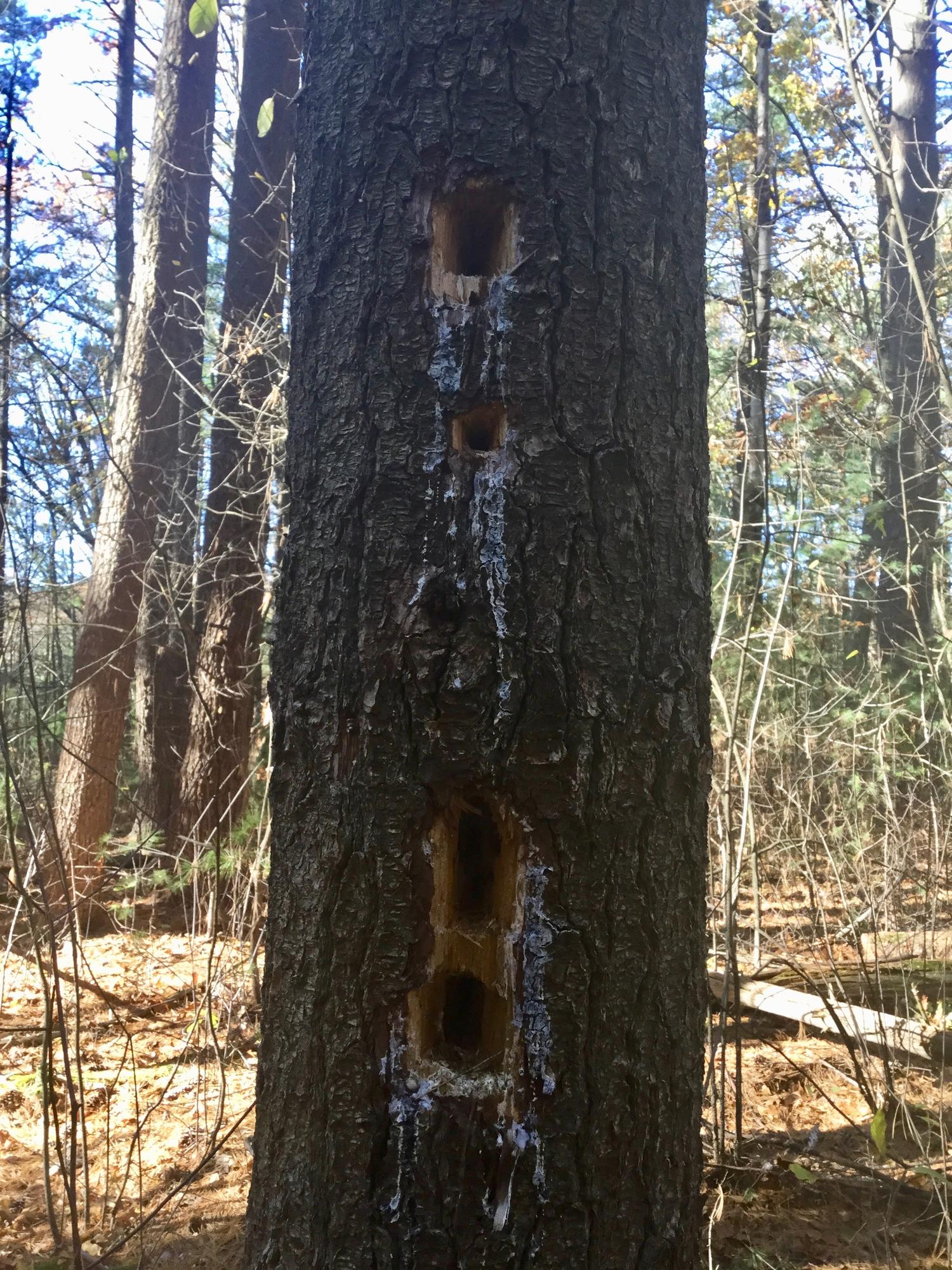
...the recent work of a Pileated woodpecker! These shy, crow-sized birds prefer extensive woodlands (a breeding pair require a territory of several miles), so they’re a rare find in Eastern Massachusetts. After deforestation drastically reduced their numbers, they’re making a comeback since the early 1900s. I’ve only found their characteristic squared holes a few times before, so I was thrilled to find them here. I took them as a sign that Brewster’s land is fulfilling his hope: providing habitat for at-risk wildlife.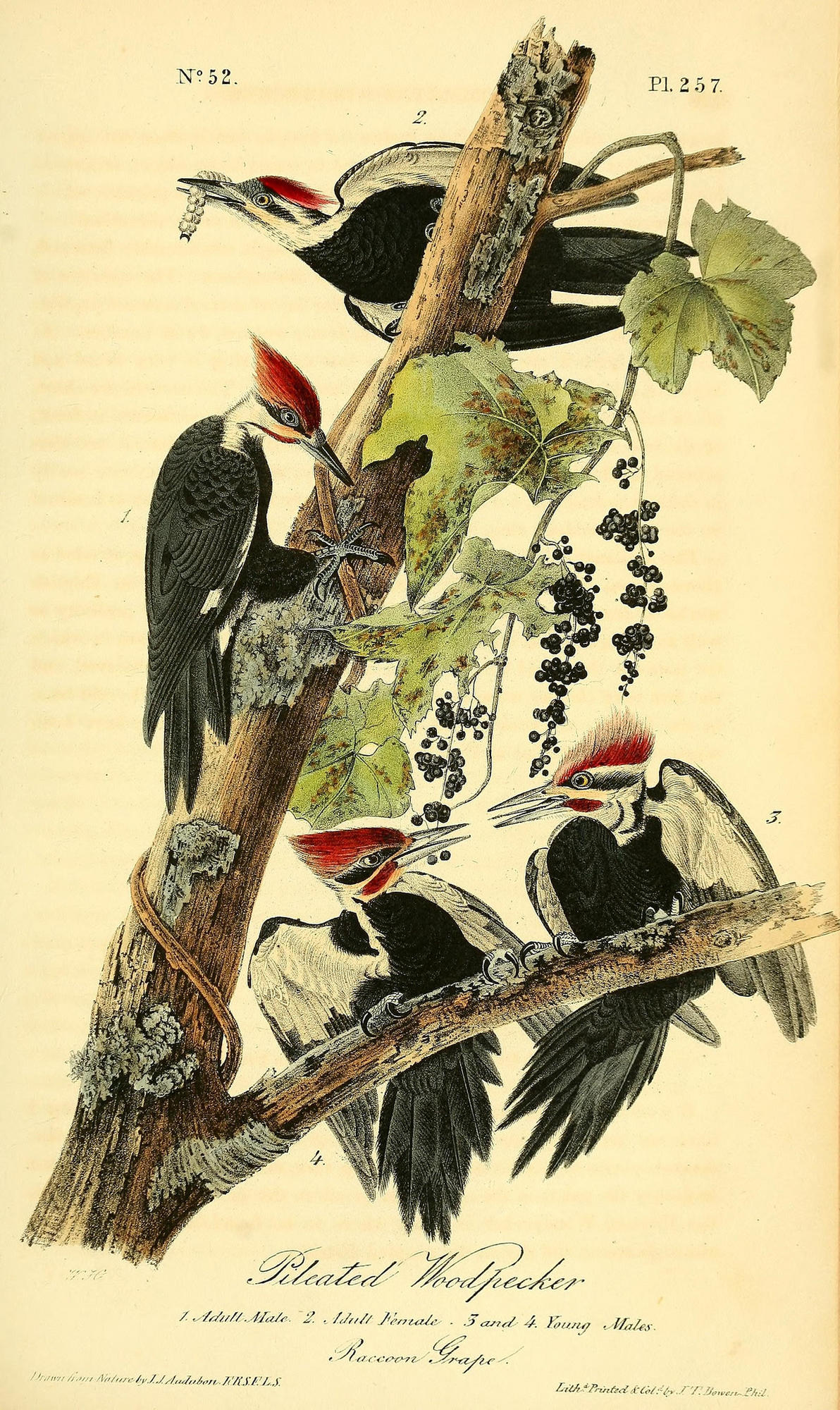
Illustration from John James Audubon’s “The birds of America.” New York: J.B. Chevalier, 1840-1844. See volume on BHL.
Back at the Mayr Library, I decided to look through Brewster’s photos in Special Collections to see what images of Concord he left for us. Here are just a few of the many images he captured of the October Farm area. I’ve included the handwritten captions from the backs of the photos when possible, and my own notes in square brackets. All of Brewster’s photographs will be eventually be digitized and available on BHL. (The following photographs are from The Ernst Mayr Library Special Collections, call no. bBr97.70.7.)
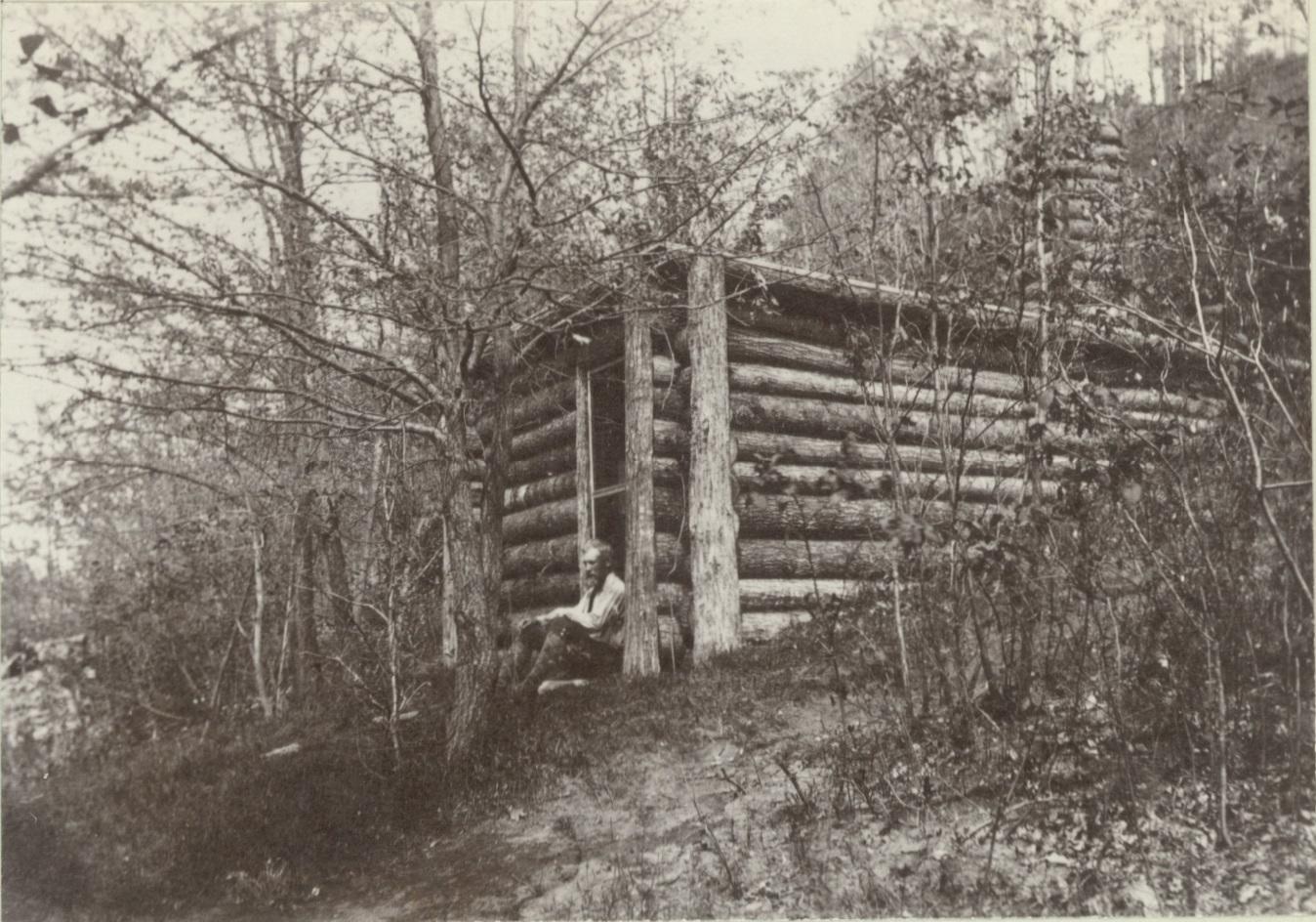
“Concord, Mass. May 20, 1892.” [The seated figure looks like Brewster.]
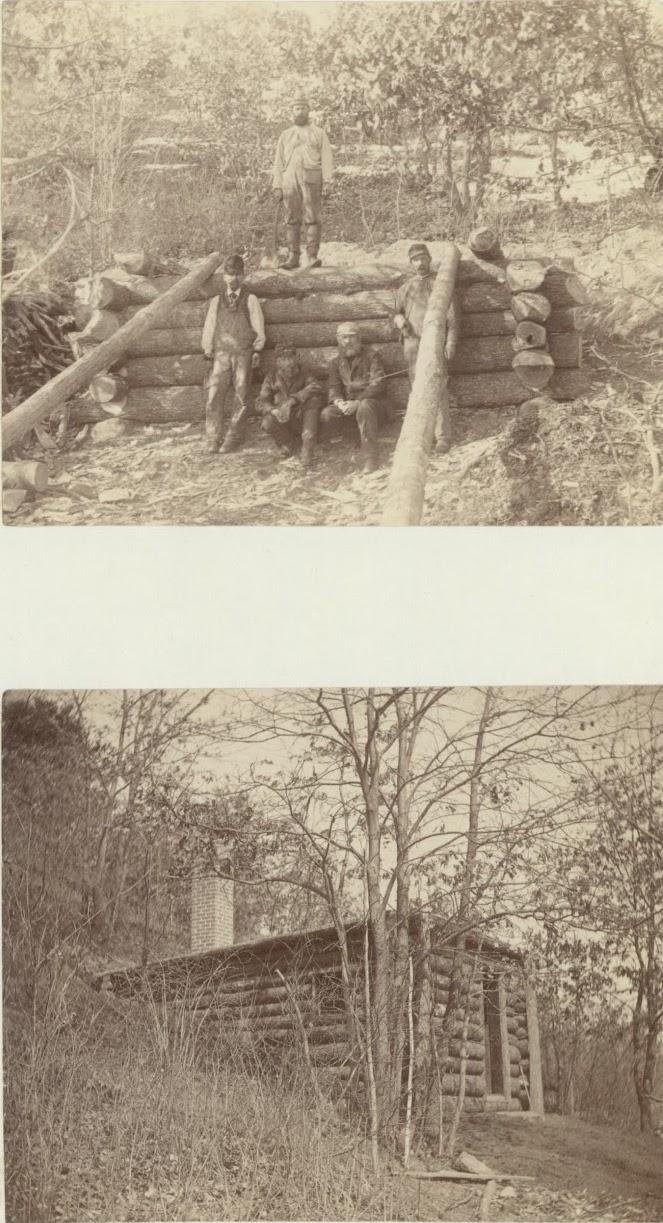
Top: “Spelman, Feb. 22, 1892.” [Photo by H. M. Spelman. Taller seated figure looks like Brewster, posing with a hired work crew.]
Bottom: “Spelman.” [Photo by H. M. Spelman.]
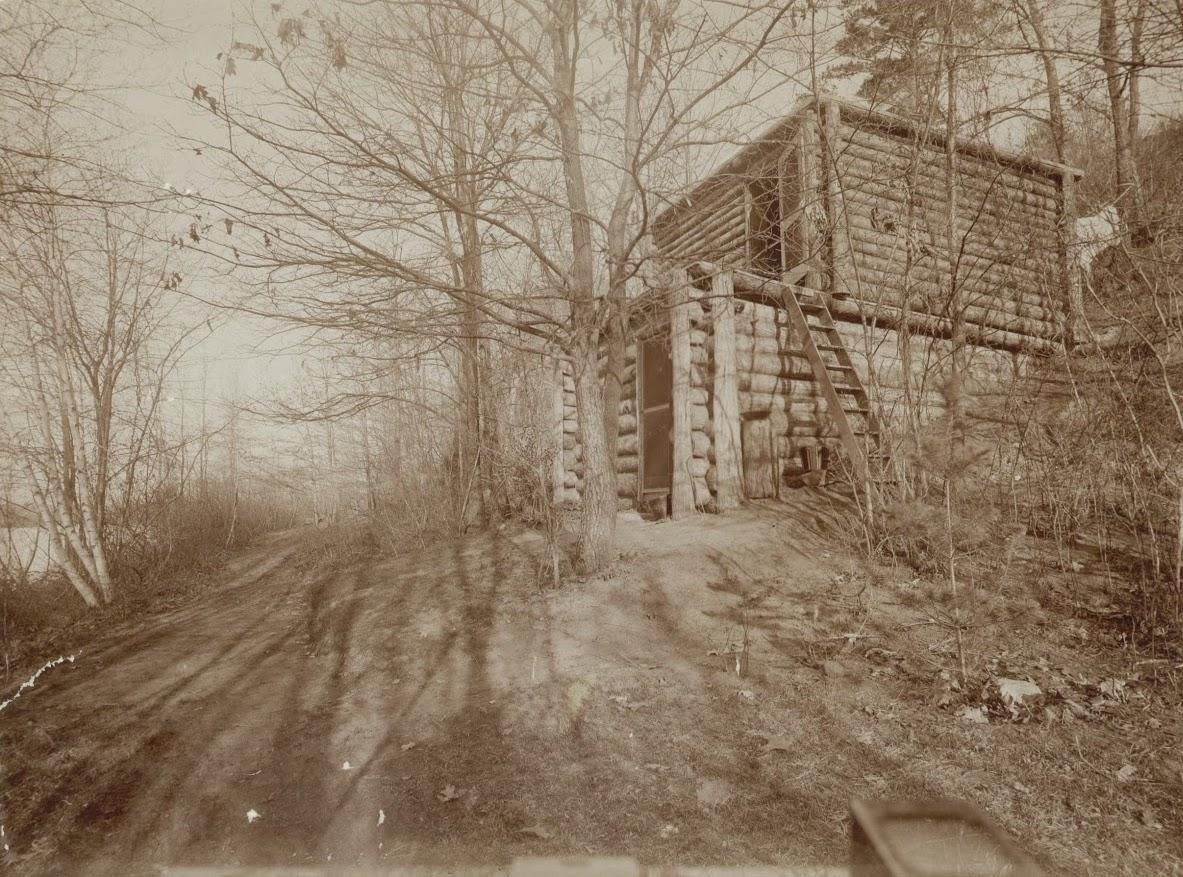
[The back of the photo isn’t accessible, so no caption available. Image shows a second level added to the cabin.]
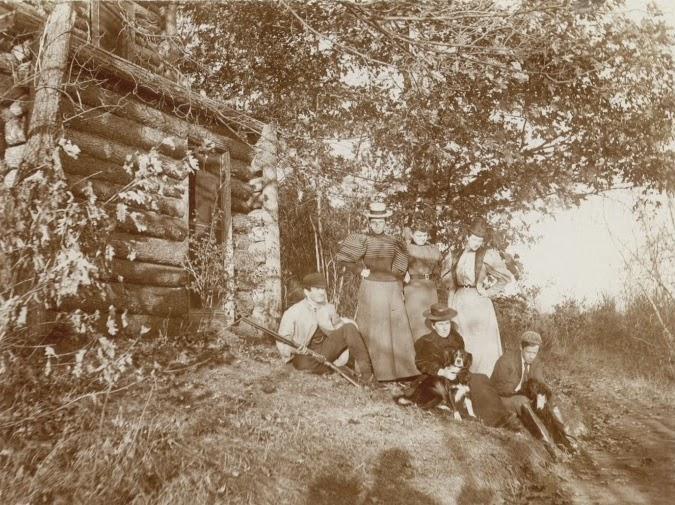
“Group at Cabin, Ball’s Hill, Concord, Mass. Nov. 3, 1895.”
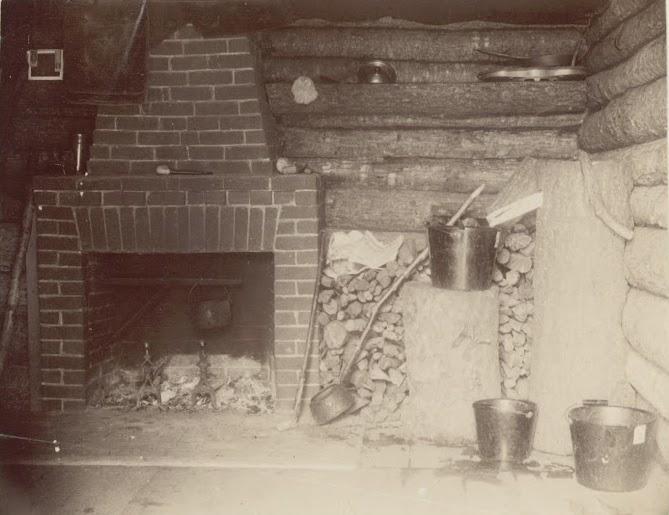
[No caption. Cabin kitchen.]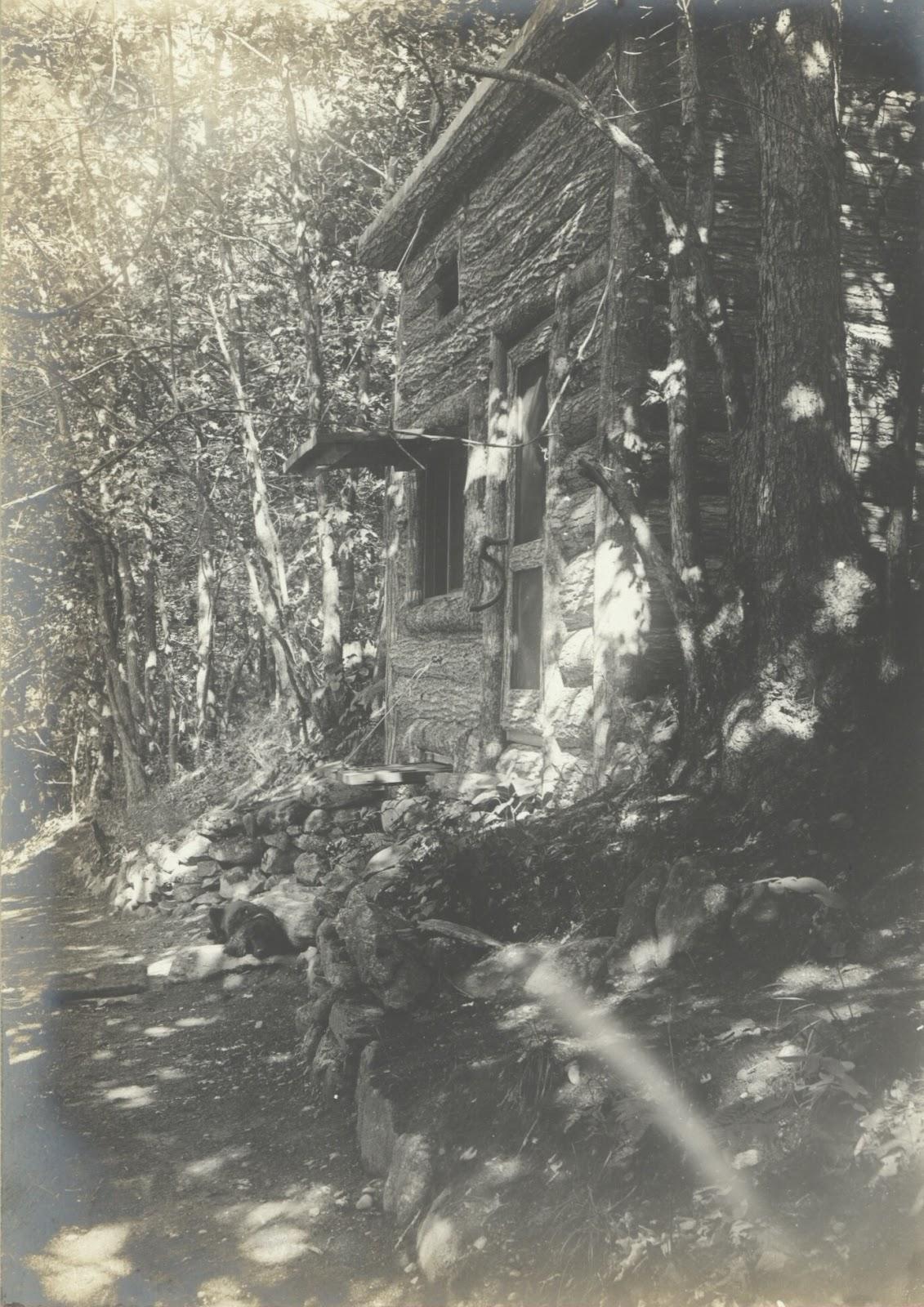
”Concord, Mass. 1902.” [Possibly the second cabin at Ball’s Hill? Notice the dog sleeping in front of the door!]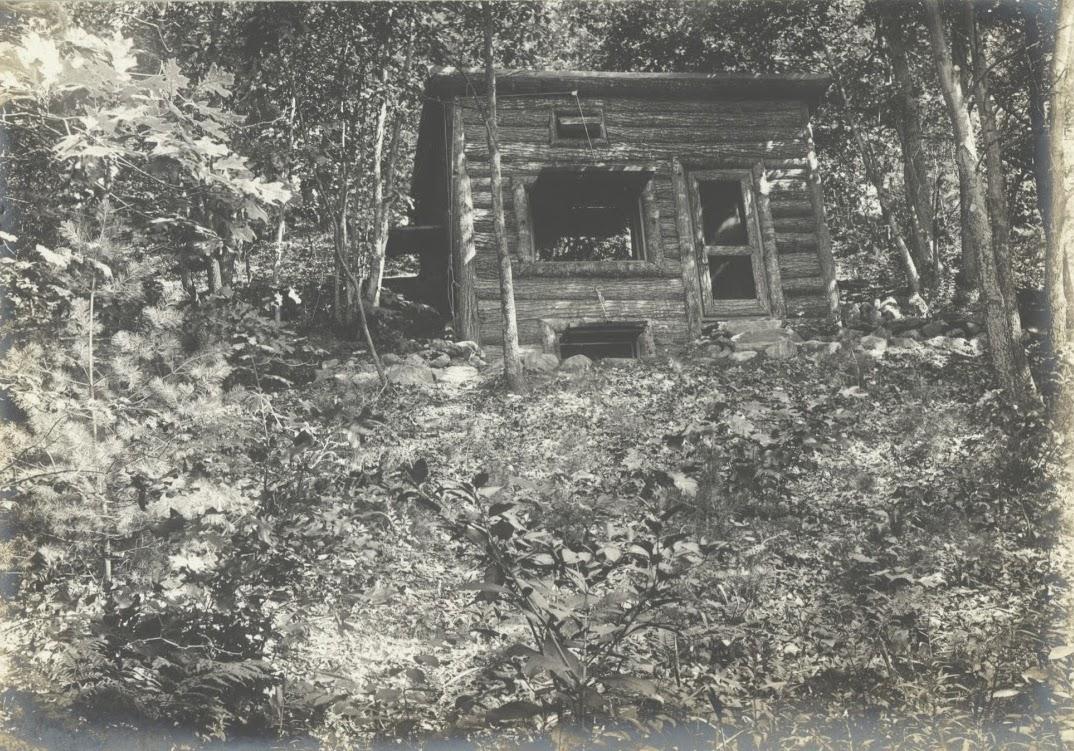 “Concord, Mass. 1901.” [Check out the neat pulley that opens the window.]
“Concord, Mass. 1901.” [Check out the neat pulley that opens the window.]
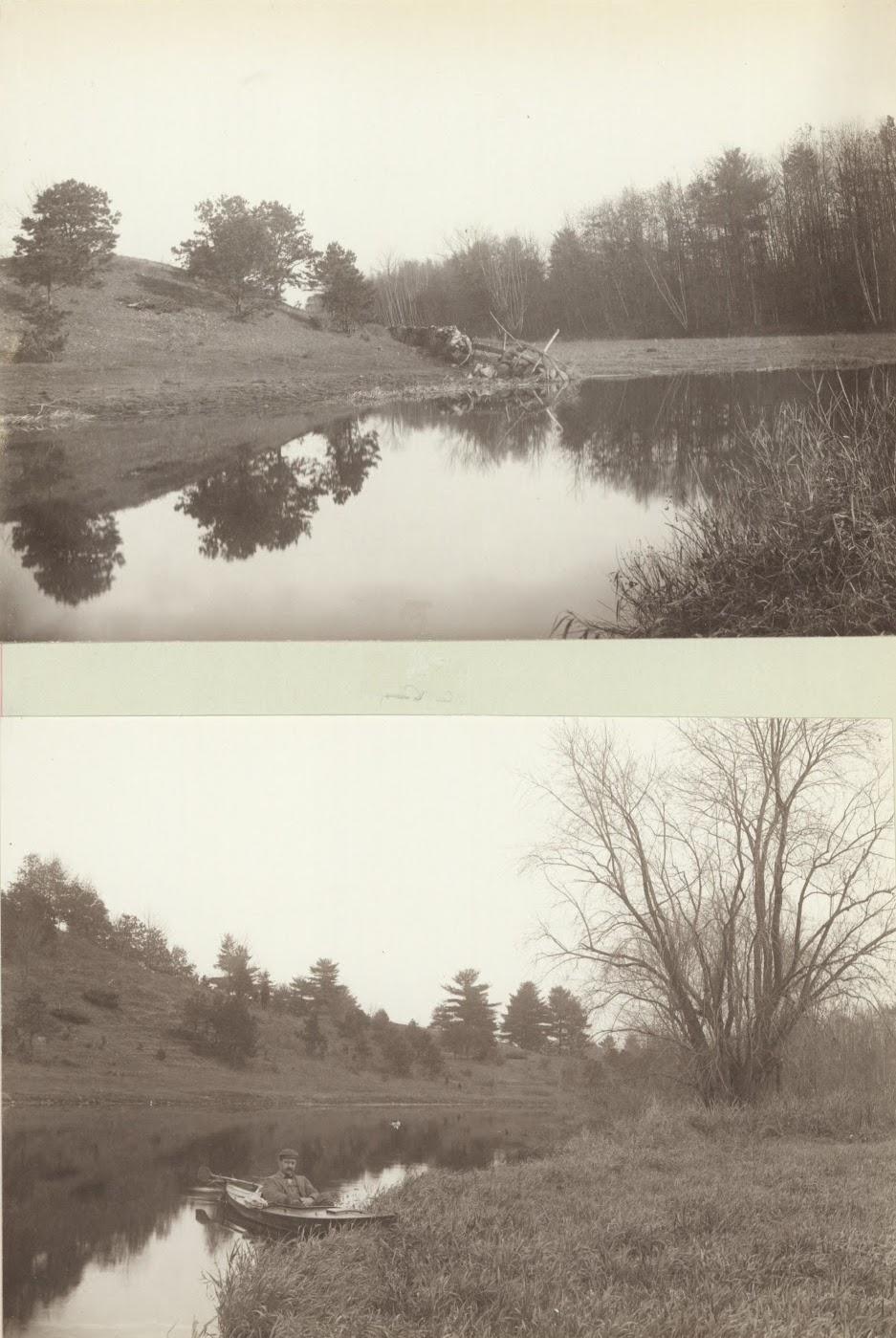
Top: “Concord, Nov. 11, 1897. E. end of Dakin’s Hill.”
Bottom: “Concord, Nov. 11, 1897. H. M. Spelman with Dakin’s Hill in background.”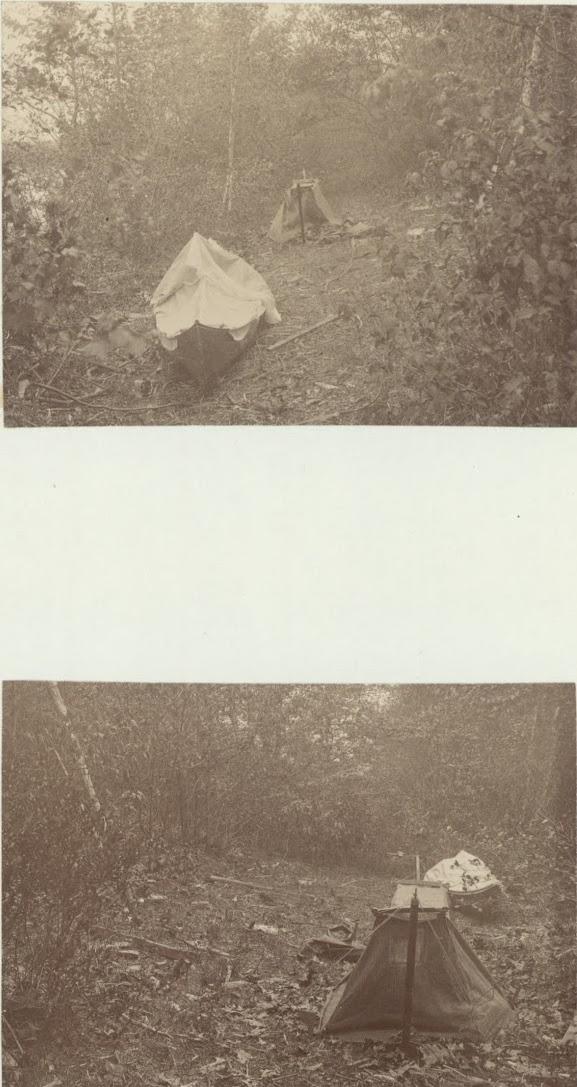
[No captions; but these were in the notebook of Concord photos.]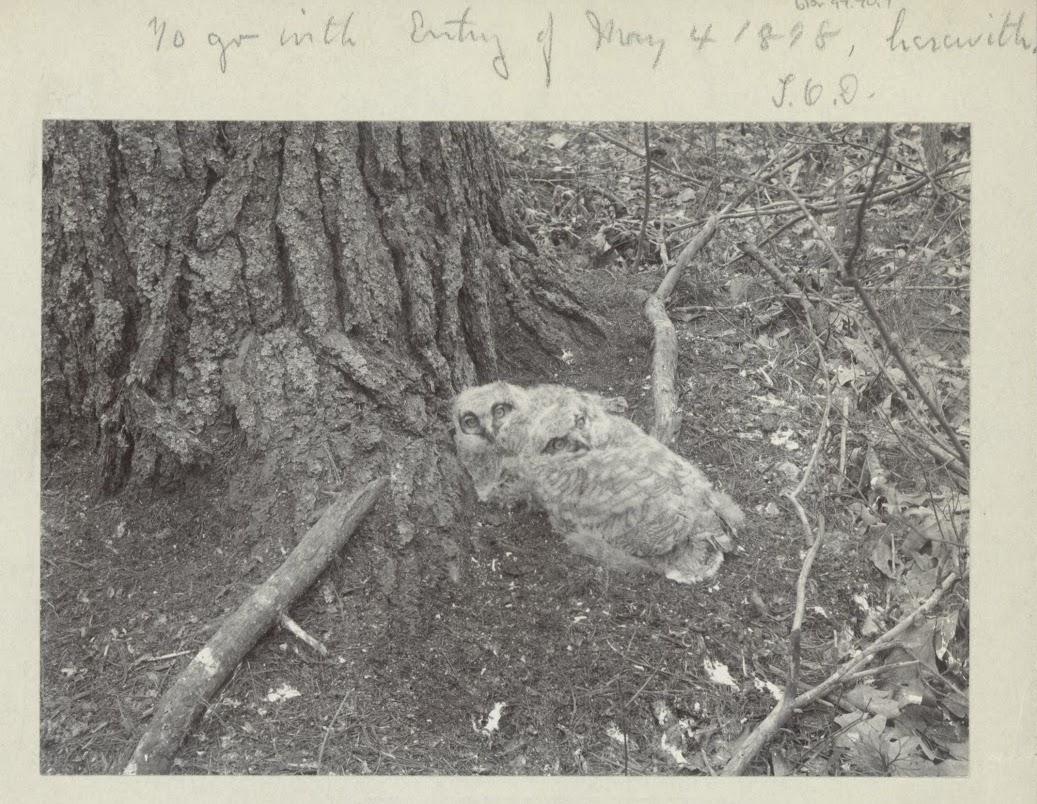
“May 4, 1898.” [Two immature Great Horned Owls. View the corresponding journal entry from May 4, 1898 on BHL.]
Finally, if you’re interested in Brewster’s notes on October Farm, I’ve written a few other blog posts that relate: one about mammals on the Concord River, about a devastating forest fire, and one about a close encounter with an owl.
Sources
Concord Land Conservation Trust, "October Farm River Front." Accessed:
http://www.concordland.org/October_Farm_Riverfront.pdf
Concord Division of Natural Resources and Concord Land Conservation Trust, "October Farm Riverfront Map & Brochure." Accessed:http://www.concordland.org/images/OFR%20Trail%20Map%20and%20Brochure%20W...
Mass Audubon Breeding Bird Atlas, ""Pileated Woodpecker." Accessed: https://www.massaudubon.org/our-conservation-work/wildlife-research-cons...(id)/92

